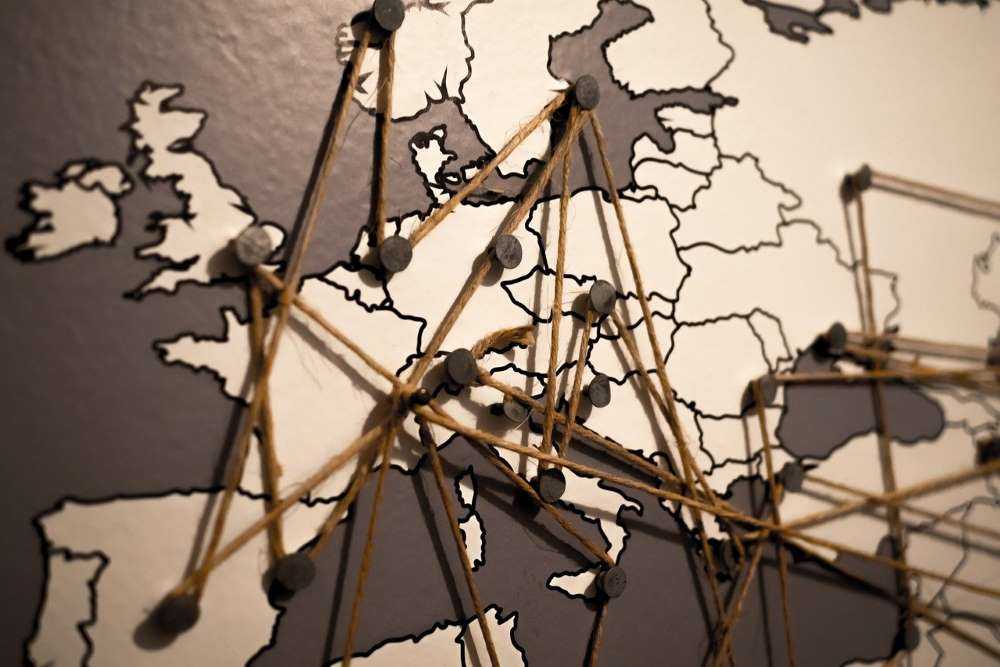How to nail your partner ecosystem strategy
- Publication date
- Author
- Imogen Beech
- Reading time
- 7 minute read
The latest buzzword among industry leaders, partner ecosystems are no longer just a ‘nice to have.’ Rather, they’ve become a crucial tool for staying ahead of your competition in a fast-moving market and preventing your business from becoming vulnerable to disruption.
Here, we’ll take a closer look at why developing a partner ecosystem strategy is an absolute must for businesses, and how to nail yours.
Developing a partner ecosystem strategy is about recognising the diverse roles and benefits that partners have to play in helping you to grow, innovate and reach your goals – and working out how to make the most of those opportunities for your business.
Accenture has revealed that 76% of business leaders believe ecosystems will render current business models completely unrecognisable within the next 5 years. And 84% of companies claim ecosystems are important to their strategy (read our selection of partner ecosystem stats for more).
Unfortunately, this means that developing a partner ecosystem strategy is no longer optional – if you’re not developing one, your competitors will be! With research showing that 40% of companies in 20 industries are highly susceptible to disruption, this just isn’t a risk that you can afford to take.
Instead, by implementing an in-depth partner ecosystem strategy now, you’ll be able to better identify opportunities and capitalise on them before your competitors do. This will include the ability to:

Okay, now you know why a partner ecosystem strategy is so important, we can move onto the bit you’ve been waiting for. Just follow these simple steps to find out how to form a partner ecosystem (and truly nail it!).
First things first, make a note of all your current partners. And we mean all of them, from resellers to bundlers, referral partners to affiliates and even companies that you outsource to. There are 15 types of strategic partnerships (that we’ve counted!), ranging from partner marketing to more in-depth partnership types that involve greater sharing of resources. They all deserve a place in your partner ecosystem.
Once you’ve listed your partners, you can look at them holistically to see what value they bring. The chances are that just a handful of your partners are responsible for the majority of the value brought to your brand through each of your individual partner programs. For instance, it’s been shown that 20% of affiliates are responsible for 80% of sales generated by affiliate marketing (according to Practical Ecommerce).
Does that mean that you should end any partnerships that aren’t bringing you much value? Not necessarily. After all, if a partner’s signed up to one of your partner programs, they clearly want to work with you. And they may still be contributing to your bottom line in some way, even if it’s not directly transactional.
So, what does it mean? Well, now’s your opportunity to compare your high performers with your… well… less high performers. What are they doing differently? And how can you use that information to help your underachievers to generate better results?
Remember that a partnership is two-sided and you have to put in as much as you take out. So, it may well be that you can make some simple changes to the way you operate your partner programs to optimise your partnerships’ success. Read our guide to becoming a partnership manager for our top tips.

Now that you have a broad overview of your partnerships, it’s time to re-evaluate how you’ve categorised them.
The chances are that a decent proportion of your partners have signed up to a partner program, like an affiliate program or a reseller program. But equally, there are likely to be some partners that don’t fit neatly into any of your existing categories.
Remember that ecosystems are all about recognising the unique skills, experiences and benefits that each partner can bring to your brand. So, it’s the nature of an ecosystem that your partners won’t all fit perfectly into certain boxes, and that’s okay! However, the key is:
By ensuring that your partner categorisation takes into account the kind of value your partners have the potential to bring, you’ll be much better placed to use your partnerships as tools to help you reach your business’ goals. For instance, although some categories of partners may help you generate revenue directly, others will help to make your product stickier (therefore aiding retention) and some may simply aid brand awareness and reputation.
Becoming more aware of where your current partners sit within this will help you to make better decisions about where to allocate your resources, and to identify missing opportunities. Which brings us onto...

Now you know what partners you have and how they’re currently contributing to your company’s overall strategy. That means it should be fairly easy to spot where there’s a gap in your partner ecosystem.
It might help to go back to our PAAARRRtnership funnel here – basically, the famous pirate funnel (Awareness, Acquisition, Activation, Retention, Referral and Revenue) with an extra P for ‘product’...
The best partner ecosystems will incorporate partners that, between them, help you optimise every step of the funnel. So, look back through your partner categories and ask yourself which steps your current partners are truly helping you solve.
Where there are gaps, consider how you can fill them. It might be that you can work with your current partners in new ways to do so. Or, it might be that you need to expand your ecosystem to include whole new partner types.

Adding new kinds of partners to your ecosystem is often the most effective way of helping you to reach goals that your existing partners aren’t currently helping you to achieve.
Let’s imagine you run a software brand that’s struggling with retention. You may have tons of marketing partners that are helping you to obtain new customers and expand your reach, but none that are geared towards retaining them.
Yes, you may be able to put a plaster over the problem by designing some co-marketing activities in collaboration with your current partners that target return customers. But let’s face it: if your customers aren’t finding enough value in your product to keep coming back, it’s never going to be a long-term fix.
Remember that a partner ecosystem is all about recognising the unique value that different partners can bring to your brand. So, at this stage, we’d suggest wracking your brains to think of partners whose unique skills and offerings can help you solve the problem.
With the above example, that’s likely to include value-added resellers and system integration partners. By building new offerings on top of your technology, they’ll be creating new opportunities for your customers and expanding your software’s potential. Ultimately, your product will suddenly become a lot more sticky, helping you to add value and therefore retain customers.
This is just one example of how you can use the full potential of your partner ecosystem to get the most successful outcome for your brand.

Finally, you’ll need to spend some time honing both your old and new partnerships to ensure they’re performing as well as they can do.
Remember that successful partnerships require time, energy and commitment from both partners (read our guide to why partnerships fail to see what we mean). So, this isn’t just a one-off step. Instead, you’ll need to continuously refine the way you manage your partnerships and identify new opportunities, in order to maximise the value your partner ecosystem is bringing to your brand.
Accenture carried out some research in the US to discover what executives who’ve developed successful partner ecosystem strategies have in common. Here’s what they found.
It’s true that every brand (and every partner) is different. But by sharing data, sharing talent and working collaboratively to make sure you’re using the right platform, you’ll be learning from the best and giving yourself the highest chances of success.

--
These five steps aren’t rocket science but they form the backbone of pretty much any partner ecosystem strategy. That said, remember this isn’t a strategy that you can just create once and then forget about. Instead, make a point of regularly revisiting it to see what works, what doesn’t, and where it can be tweaked to align it better with your company’s goals and overall strategy.
So, what are you waiting for? Now’s the time to start creating a partner ecosystem your competitors will envy. And if you need a little help discovering brands to add to your ecosystem, just book a demo with Breezy. Our advanced partner search engine can give you hundreds of relevant partner suggestions. Enjoy!
Imogen is a copywriter and content writer with over two years’ experience writing about the exciting world of strategic partnerships, as well as running her own business. She loves learning about new topics as she writes, and has enjoyed penning articles on industries ranging from mortgages to events, theatre to home improvements and everything in between.
View more by Imogen Beech